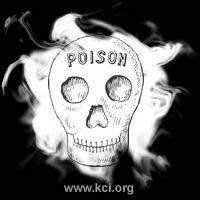|
Manufacturing of
Methamphetamine
The
ease with which methamphetamine can be manufactured is a major
contributing factor to the increase in its use. Law enforcement
officials identify and close hundreds of clandestine
methamphetamine labs each year. Large operations produce
methamphetamine in Mexico and California. Outside of these
areas, small rural laboratories are more common. Rural areas are
popular sites for production because strong odors are produced
during manufacture. "Mobile labs" have begun to appear in a
number of states, making seizures more complicated. The
manufacture of methamphetamine is simple because it does not
require agriculture, specialized equipment, or advanced
technical training. It is easily "cooked" up by anyone in a
makeshift lab hidden in mobile homes, warehouses, or even motel
rooms. Congress enacted the Methamphetamine Control Act of 1996
to curb the production and abuse of methamphetamine by
controlling the key chemicals necessary to produce the drug and
by increasing criminal sentences for its possession and
distribution.
Methamphetamine hydrochloride is easily produced using
ephedrine, hydroiodic acid (both controlled substances), or
over-the-counter pseudoephedrine found in cold medication.
Hydroiodic acid is a necessary ingredient in one of the major
manufacturing processes. Although strictly controlled, it can be
created by combining red phosphorous and iodine - chemicals that
are not regulated. Recently, phenylpropanolamine has been used
as a precursor chemical to produce amphetamine. However, this
product is also marketed as methamphetamine.
The key ingredient of methamphetamine is
ephedrine, a controlled substance. Because it is difficult to
obtain ephedrine, drug dealers use pseudoephedrine, found in many
over-the-counter medicines. These medicines are processed to
remove buffers and produce ephedrine. Cash purchases of large
quantities of red phosphorous and iodine (for hydroiodic acid) are
made by drug dealers in order to produce methamphetamine. No
federal regulations or quantity limitations control the sale of
these chemicals; therefore, it is difficult for the DEA to track
their possession. As part of the Methamphetamine Control Act of
1996, these chemicals, along with pseudoephedrine, have been added
to the target list in the Chemical Diversion and Trafficking Act,
CDTA. With the ability to track the sale of large quantities of
these chemicals, the DEA will be able to identify major
manufacturers of methamphetamine. |
|
 The Drug Enforcement Agency
(DEA) identified clandestine laboratories in Mexico and California
as the major sources of methamphetamine. Legal access to an
abundant supply of chemical precursors in Mexico makes this
country a major producer. The ephedrine/pseudoephedrine reduction
method is common in Mexico because of the abundant supply of these
chemicals. Organized crime groups operating in Mexico run major
distribution channels. They have access to wholesale ephedrine
sources of supply on the international market; they produce vast
quantities of high-purity methamphetamine on a regular basis; and
they already control established cocaine, heroin, and marijuana
distribution networks through-out western, southwestern, and,
increasingly, southern and Midwestern states. The Drug Enforcement Agency
(DEA) identified clandestine laboratories in Mexico and California
as the major sources of methamphetamine. Legal access to an
abundant supply of chemical precursors in Mexico makes this
country a major producer. The ephedrine/pseudoephedrine reduction
method is common in Mexico because of the abundant supply of these
chemicals. Organized crime groups operating in Mexico run major
distribution channels. They have access to wholesale ephedrine
sources of supply on the international market; they produce vast
quantities of high-purity methamphetamine on a regular basis; and
they already control established cocaine, heroin, and marijuana
distribution networks through-out western, southwestern, and,
increasingly, southern and Midwestern states.
Small, rural, locally controlled laboratories
have become more prominent, especially in the Midwest. In
Missouri, the DEA reports that many local entrepreneurs are women,
who dominate production and teach others the production process.
Once caught, they are tough to prosecute due to a tremendous
backlog in testing confiscated substances.
No matter the size of the lab or who runs it,
processing methamphetamine is dangerous. Ignitable, corrosive,
reactive, and toxic chemicals can cause explosions, fires, toxic
fumes, and damage to health and environment. More information
about manufacturing methamphetamine may be found in a NIDA
monograph (Miller & Kozel, 1991). *Information provided by Missouri Department of
Mental Health.
See also:
Sites and Links Against Methamphetamine
Methamphetamine FAQ
|
![]()
![]()